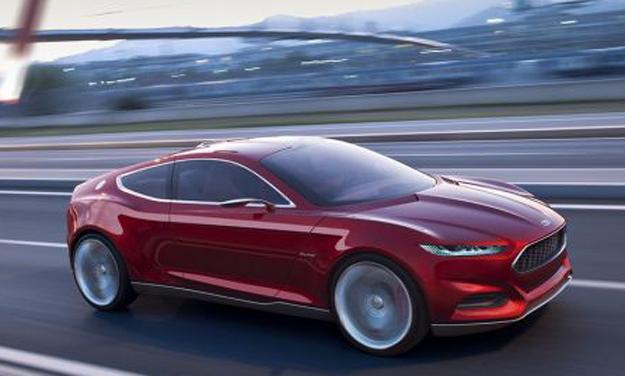 People say not to mess with perfection, but Ford might be doing just that when the next Mustang rolls into showrooms in 2015. For its past two generations, the Mustang has been a retro ride, designed to look like classic ‘Stangs from the 1960s. That classic shape has been the key to the Mustang’s popularity, but Ford will be going a different route with the 2015 model. The next Mustang will have modern styling similar to what we’ve already seen on the 2013 Fusion sedan.
People say not to mess with perfection, but Ford might be doing just that when the next Mustang rolls into showrooms in 2015. For its past two generations, the Mustang has been a retro ride, designed to look like classic ‘Stangs from the 1960s. That classic shape has been the key to the Mustang’s popularity, but Ford will be going a different route with the 2015 model. The next Mustang will have modern styling similar to what we’ve already seen on the 2013 Fusion sedan.
Ford insiders say the 2015 Mustang will be almost identical to last year’s Evos concept car. The Evos was supposed to be preview of the Fusion, but its combination of coupe-like styling and sedan interior volume mean its design cues could be applied to a Mustang as well. The overall proportions, not to mention the Aston Martin-like grille, would look great on a sporty coupe like the Mustang, the only question is whether it will appeal to fans of the current, retro design.
Retro cars like the Mustang, Volkswagen Beatle, and Mini Cooper are popular for a reason. They attract nostalgic Baby Boomers, who will spend any amount of money to relive their youth. Retro cars also stand out: their unique styling separates them from everything else on the road, while still maintaining brand identity through classic design cues. A 2012 Mustang isn’t just a cool looking car; because it looks the same as a 1968 Mustang, it is instantly recognizable as one.
When Steve McQueen’s Mustang GT was just a used car, not a classic, Ford began experimenting with different designs. Through the ‘70s, ‘80s, and ‘90s, the Mustang evolved, but it also lost a lot of its appeal. In 2005, Ford launched its first retro Mustang, bringing the car out of a sales slump. That 2005 model shared many parts with its predecessor, but the styling made it a winner.
So why would Ford mess with its winning formula? Apparently, it’s no longer winning. Ford sold 166,350 Mustangs in 2006, but only 70,438 in 2011. Last year, Ford introduced vastly improved engines (a 5.0-liter V8 and a 3.7-liter V6), but that wasn’t enough to reinvigorate sales.
Instead of catering to nostalgic Baby Boomers, Ford hopes to entice younger buyers with the Evos-derived styling. The retro Mustang’s sales may be declining, but that could still be a big risk. The American “pony cars” (Mustang, Chevy Camaro, Dodge Challenger) use their classic styling and history to set themselves apart from other sporty coupes, so Ford will be creating a whole new paradigm with the 2015 Mustang. It is also unclear whether the current car’s styling is what keeps young buyers away.
If Ford wants to keep its shareholders happy, it needs to do something about the Mustang’s sales. However, that something could alienate the car’s traditional fans. No one wants to anger their devoted followers, but it might be time to try something new. The Mustang just celebrated its 48th birthday; it has the staying power to weather some experimentation. Who knows, maybe today’s 20-somethings will be pining after a retro Mustang based on the 2015 model when they reach middle age.


